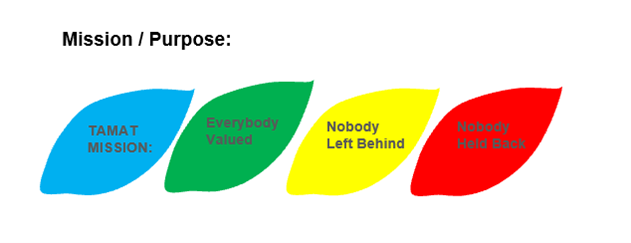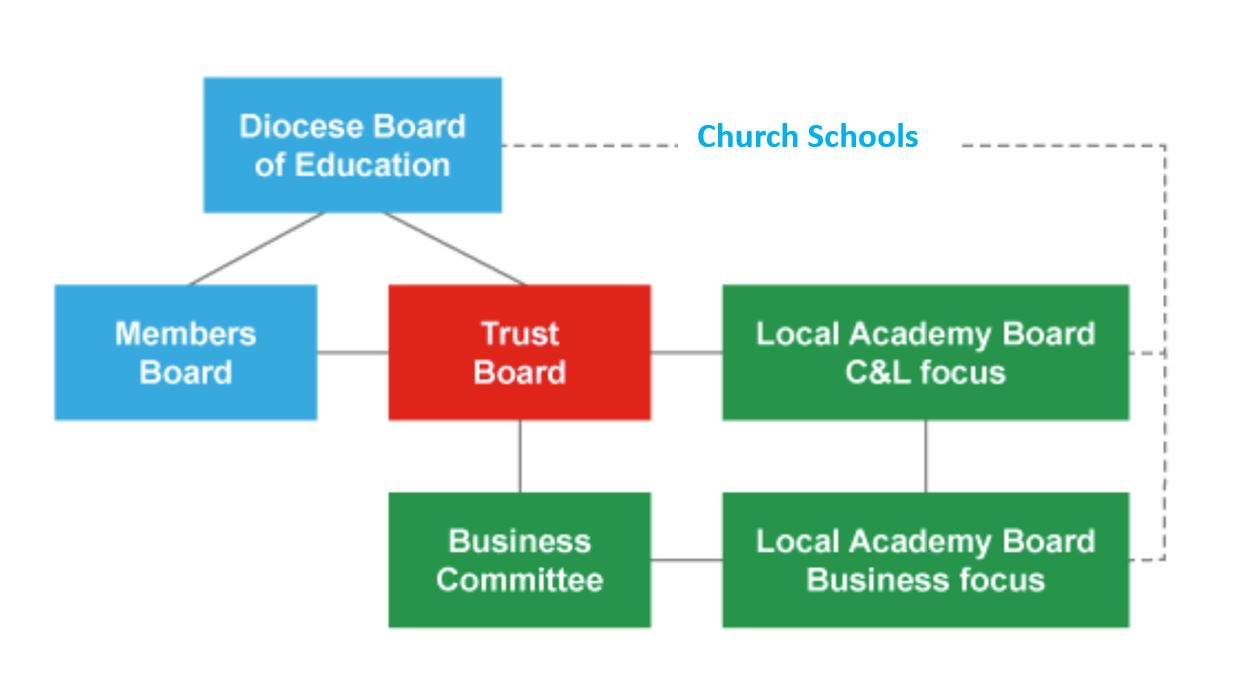Governance Structure
Governance Overview
The Alliance Multi-Academy Trust (TAMAT) was formed in April 2018 to bring together local, like-minded schools within collaborative reach to achieve even greater outcomes for every child than would be individually possible. We aim to provide the best education for our children through the best staff and systems. We have a clear focus on leadership, teaching, governance, professional development and collaboration at every level of the Trust.
We place learning at the heart of our communities. We pool our resources to deepen and nourish the education of all. We aim to improve the life chances of all our children, by helping them develop wisdom, hope, a sense of community and dignity.
Each school’s unique ethos and values, whether secular or faith, are strengths to be celebrated and enrich our trust. Fundamental to all schools within our alliance is a belief in a child-centred approach to education and a commitment to raising the aspirations, achievements and well-being of every one of our children, our staff and our communities.
Together we aim to be a thought-leading, value-adding and sustainable growing alliance of local, like-minded & collaborative schools, which will all be good or outstanding with the capacity to support schools in need of improvement.

OUR GUIDING PRINCIPLES
We believe that the following are fundamental to the success of our alliance:
- Develop outstanding leadership at all levels within TAMAT and beyond
- Develop and share excellence in teaching and learning
- Enable a culture of collaboration, challenge, support and shared accountability
- Drive an agenda of continuous school improvement through robust self-evaluation and quality assurance
- Commit to tailored investment in continuous professional development that attracts, develops and retains the best
- Provide financial expertise, strength and resilience, driving probity and compliance
TAMAT was the first MAT in Surrey to include both faith and community schools. As a pathfinder MAT our governance structure was created in close consultation with the Guildford Diocese Board of Education (DBE) and the Regional Schools Commissioner. TAMAT includes two Voluntary Controlled (VC) schools and our governance structure more than meets the requirements of the National Society (VC model) with two members and three trustees having foundation status. Currently, TAMAT is exploring the possibilities to be able to work more closely with Voluntary Aided (VA) schools through changing to Equity Articles.
TAMAT Trust Board is set up with appropriate and targeted skills which consists of: HR, finance, school improvement, premises, legal, marketing and procurement who are independent of local advisory boards but some of whom have been local school governors. Trustees hold the Chief Executive Officer (CEO) to account for the performance of the schools within the trust. The CEO is not a trustee, but leads the Executive Team consisting of Heads, Safeguarding and Inclusion Ledaers and the Chief Financial Officer.
Local Academy Boards (LAB) reflect the character of the schools prior to joining the MAT. The Diocese appoints 25% of the governors to Holy Trinity C of E School (VC) and St Martin's C of E School LABs. Local Academy Boards focus on the quality of teaching and outcomes for children with oversight provided by the CEO and trust.
TAMAT is presently made up of seven schools: two infants, two juniors and three primary schools, of which two are Voluntary Controlled (VC) all within reachable distance over lunchtime and are based in Surrey Heath or Dorking.
Each school’s uniqueness, talents, resources, ideas, expertise, staff and leadership teams make us stronger together as TAMAT – which was particularly evident during the Covid-19 pandemic. We provide school improvement support within TAMAT and work with schools outside the trust. Our commitment to building expertise networks and CPD adds capacity and keeps our staff motivated.
Members, Trust Board and Local Academy Board (LAB) Handbooks support each layer of governance and are reviewed annually. Below is an overview:
Members:
The members of TAMAT are the guardians of the governance of the trust. They have a limited and
distinct role. In broad terms, their powers and duties are:
- To appoint and remove Trustees (with the exception of the Diocesan appointed Trustees)
- To maintain the Membership and to appoint new and replacement Members
- To approve any proposed changes to the Articles of Association
- To receive the annual accounts of the Trust
- To hold Trustees to account for upholding the objects of the Trust and how trustees hold the Executive Team (CEO & Headteachers) in delivering the mission and vision of the Trust.
Trust Board
TAMAT Trustees are the legal governors of the schools and are accountable for all statutory functions. At the local level, Trustees delegate governance functions to Local Academy Committee (LAB) at each school in line with the TAMAT Scheme of Delegation document. The main trustee responsibilities are:
- Vision and priorities for the Trust
- Procurement of any contract in excess of £30K
- Approve overall budget for the Trust - which will be a consolidated budget of all academy budgets and the central budget
- Approve the annual accounts of the Trust
- Ensure that all regulatory requirements are met
- Evaluate pupil achievement, staff performance and professional development through benchmarking across the trust and with local and national data
- Ensure compliance with safeguarding and health & safety regulation
- Hold CEO to account for the overall performance of the Trust and schools
- Approve all policies that the Trust by law is required to maintain.
- Determine each year the scheme of delegation and handbooks
- Ratify admission arrangements for each academy.
Local Academy Boards (LAB)
TAMAT values subsidiarity and therefore the vital role that LABs play in making sure that decisions are taken at a level closest to those affected by those decisions. It intends to fully utilise the skills and experience of local governors and leaders in ensuring that every child receives the very best education.
The LAB is a committee of the Trust Board with delegated responsibility for strategically assessing the continual improvement of the academy’s educational outcomes.
The role of the LAB is to act as the leadership’s “Critical Friend”. The LAB will keep local oversight of educational outcomes, health and safety, local policy implementation and safeguarding. Budget setting will remain the overall responsibility of the Trust Board, however the LAB must agree a balanced budget at academy level either using accumulated reserves or through a TAMAT Loan.
For clarity, as regards Ofsted, the LAB will be the body that provides local governance for the school.
LAB Delegated responsibilities:
- Vision and strategic direction of the Academy
- To monitor the academic and pastoral performance
- To agree and monitor the School Development Plan (SDP)
- To ensure that self-evaluation is robust and accurate
- To monitor all aspects of the curriculum and CPD provision
- To monitor all aspects of SEND and the provision for vulnerable groups
- To monitor impact of additional funds, (Pupil Premium and Sports Grants),
- Ensure effective Safeguarding procedures - including safer recruitment
- Monitor H&S at local level via Compliance Officer and HT Report
- To monitor pupils’ attendance, behaviour and any exclusions
- To monitor all aspects of readiness for inspection
- To receive staffing information from the Head as part of their HT Report.
- To recommend a balanced, local academy budget aligned to the SDP and staffing
- To review, monitor and approve Academy specific policies and procedures.

